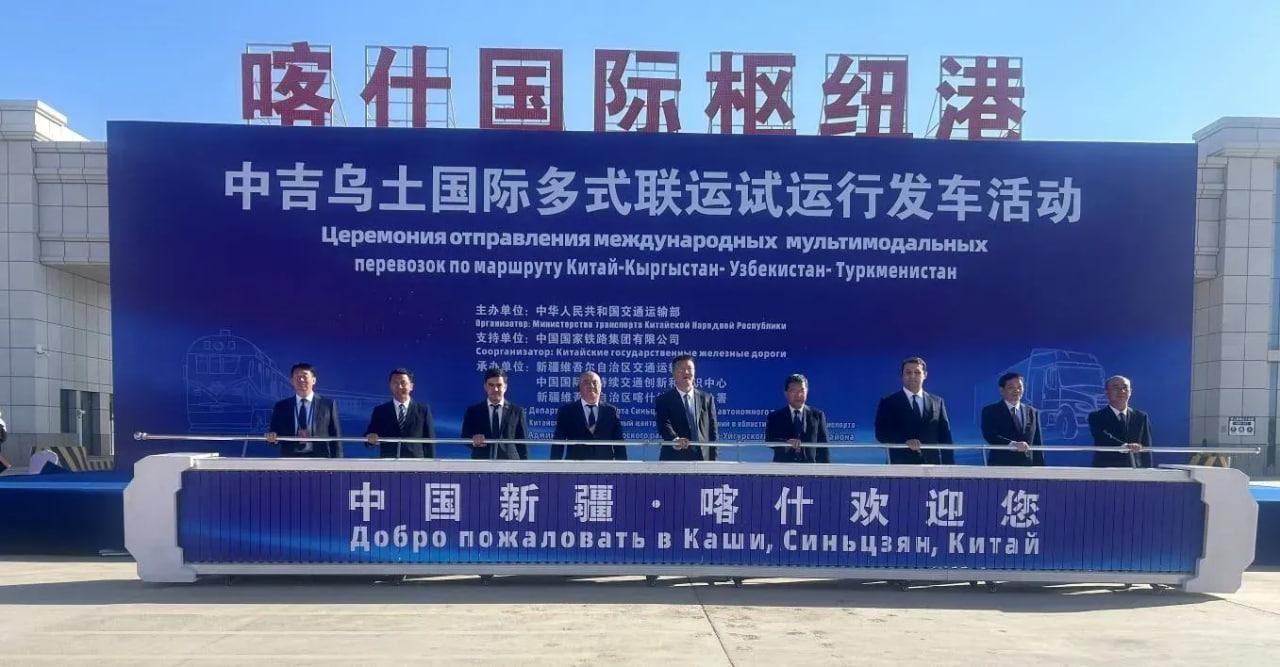BEIJING RAISES STAKES IN TURKMEN GAS GAME
BEIJING RAISES STAKES IN TURKMEN GAS GAME
On October 31, oil trading on the New York Mercantile Exchange soared to a record-high $95.08 a barrel for December delivery before settling to $94.53. As the Western energy market has become increasingly jittery, China, now the world’s second-largest oil import market, has made its presence felt. Beijing is now discreetly going head-to-head with both Russia and the West in Turkmenistan, where opportunities suddenly opened up late last year following the unexpected death of the country’s mercurial leader, Saparmurat Niyazov, on December 21.
While the ultimate outcome of the three-way struggle among Russia, the West, and China for control of the world’s fourth-largest natural gas reserves is unclear at present, the immediate winner is Ashgabat, which is enjoying a bidding war for its energy reserves. Despite Turkmenistan’s geographic distance and relative isolation, both Beijing and the West see Turkmenistan’s energy assets as a lucrative grand prize. At stake are Turkmenistan’s natural gas reserves, estimated by the CIA in 2002 at 1.43 trillion cubic meters, exceeded only by those in Russia, Iran, and Qatar (CIA World Factbook 2006).
Underscoring China’s interest in Turkmen energy reserves, Chinese Prime Minister Wen Jiabao is scheduled to visit Ashgabat on November 3-4 after attending the sixth meeting of the Shanghai Cooperation Organization. Turkmen President Gurbanguly Berdimukhamedov stated that the construction of a Turkmenistan-China natural gas pipeline could be an important factor in developing Central Asia as well as in promoting regional stability (Xinhua, October 26). Berdimukhamedov was upbeat about the tenor of the projected discussions, saying that they would “of course center on various aspects of the Turkmenistan-China gas pipeline, which will connect our countries and will be an important factor in promoting stability and prosperity in the region” (Interfax, October 26). Berdimukhamedov insists the pipeline is already having an impact far beyond Turkmenistan, telling reporters, “The Turkmenistan-China gas pipeline will start the formation of a totally new transport and energy infrastructure in Central Asia and the East” (Interfax, October 25).
Turkmenistan has also been carefully laying the groundwork for its eastern neighbor, Uzbekistan, to be involved in the pipeline project. During October talks in Ashgabat, Uzbek President Islam Karimov and Berdimukhamedov supported the project, with Karimov noting that the proposed pipeline, which would traverse Uzbekistan, “will help expand export directions for Uzbek gas, along with an increase in the transit potential of our country,” while Berdimukhamedov added, “Joining the economic potential and using the geopolitical position comprehensively, the partnership between Turkmenistan and Uzbekistan becomes a real factor of sustainable development of the whole central Asian region” (Itar-Tass, October 19).
The proposed 4,350 mile-long natural gas pipeline to China, agreed upon in April 2006 by the late president Niyazov, is also Turkmenistan’s major bargaining card with Moscow for higher prices for Turkmen natural gas, which Gazprom currently buys at $100 per thousand cubic meters, even as it charges Western European customers $260 for the same volume of gas. As envisaged, the Turkmen-China line will begin to transmit 30 billion cubic meters of natural gas from Turkmenistan’s Bagtyyarlyk field to Chinese markets under 30-year contracts on January 1, 2009.
Turkmenistan’s efforts to break out of Niyazov’s isolationist polices have already borne fruit. In addition to Ashgabat’s efforts to expand energy exports northward to Russia and eastward to China, discussions are ongoing with Western concerns about a possible undersea Caspian gas pipeline. Turkmen gas exports southward to Iran have also expanded significantly, with Iran having imported over 3.5 billion cubic meters of gas from Turkmenistan since March, according to Deputy Petroleum Minister for Gas Affairs Seyyed Reza Kassaeizadeh, who noted that Iranian consumption of Turkmen gas had soared more than 16% from the same period a year ago (Teheran Times, October 30). The difference from the isolationist days of Niyazov could not be more pronounced.
Ashgabat is clearly in the driver’s seat, able now to choose among three major suitors for its energy reserves – Russia, China, and the West. All three have different alluring aspects to their offer – Russia can offer immediate cash on the barrel, as it can currently export Turkmen gas via the pre-existing Soviet-era Transneft pipeline network. China dangles the possibility of Turkmenistan having decades-long-term contracts into the world’s most rapidly growing energy market, while the West can offer a cornucopia of both technology and financing.
Even better for Ashgabat, a fourth prospective suitor is waiting in the wings. India’s Oil Minister Murli Deorahas has expressed India’s keen interest in New Delhi’s receiving Turkmen natural gas from Turkmenistan through the potential Turkmenistan-Afghanistan-Pakistan (TAP) pipeline (Reuters India, October 29).
The only certainty is that Turkmenistan is in the enviable position of choosing among the many offers on the table.


